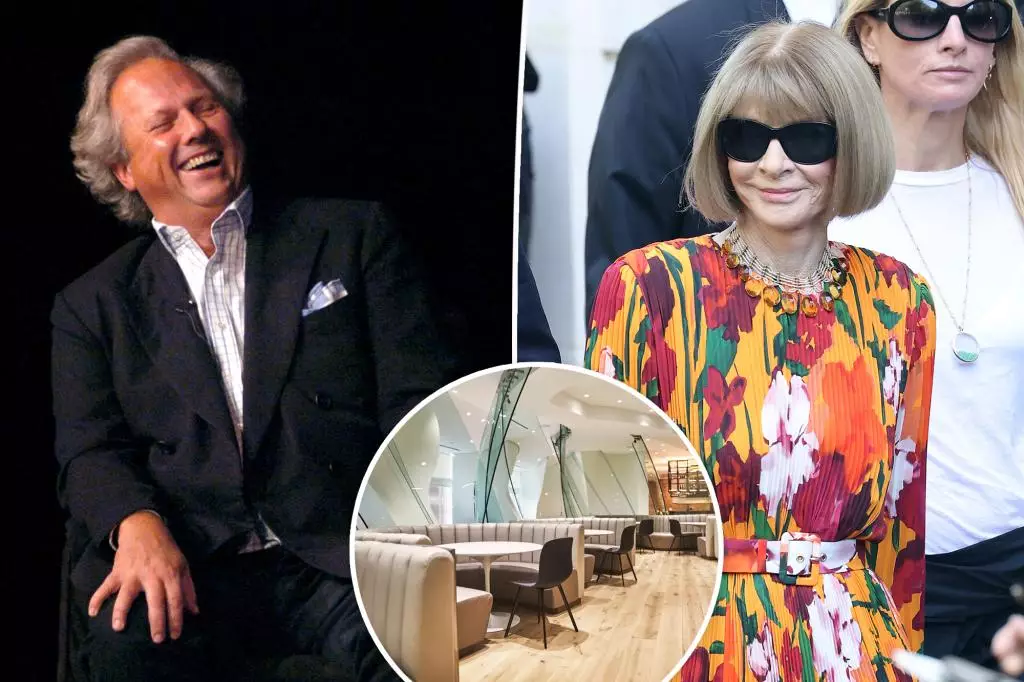After more than a decade of silence, the legendary Condé Nast cafeteria is poised to reopen its doors—not merely as a place to eat but as a symbol of prestige and corporate identity. This space, once designed by Frank Gehry, embodied the pinnacle of modern luxury and innovation in workplace architecture. Its comeback signals more than a return to routine; it represents a deliberate reclaiming of the brand’s storied history and cultural influence. The cafeteria was more than a dining hall; it was a statement—an avant-garde statement of power, aesthetic ambition, and internal hierarchy within the media giant. Its rebirth underscores the importance of environment in shaping corporate identity and morale, especially for a publication house frequently heralded for its style and cultural authority.
Architecture as a Cultural Statement
The Gehry-designed space was not merely functional; it was a testament to Condé Nast’s flair for innovation and exclusivity. With titanium panels resembling stalactites and ornate Venetian glass elements, the environment was a provocative blend of art and commerce. It challenged conventional notions of a cafeteria, elevating the mundane lunch experience to an artistic statement—an arena where the aesthetics of interior design paralleled the creative ambitions of the editorial staff. Gehry’s distortions and playful use of space fostered an environment of discretion and intimacy, perfect for hushed conversations and subtle power plays. The deliberate choice of taxi-yellow laminate tabletops highlighted the city’s industrious spirit, subtly linking the glamour of the media world with New York’s gritty resilience.
The Power of Space in Corporate Culture
The opulence of the cafeteria, combined with Gehry’s daring design elements, illustrates how corporate spaces serve as physical manifestations of strategic intent. It wasn’t just about luxury; it was about constructing an environment that reinforced the elite status of Condé Nast’s personnel. The addition of distorted mirrors—so that passersby appeared smaller—carried symbolic meaning: reinforcing the sense of exclusivity and superiority internally, while subtly hinting at the surrounding competitive urban environment. Condé Nast understood that physical spaces influence perception internally and externally, creating a shared cultural identity rooted in aesthetic distinction and social stratification.
The Mythology and Reality of the Media Elite
The cafeteria also reveals insights into the media elite’s self-perception and the narratives it fosters. The lavish design and high-level secrecy encapsulate the culture of power and influence that permeates the company. As Grynbaum notes, Si Newhouse’s substantial investment in Gehry’s vision was both pragmatic and aspirational—a way to make a cultural move more palatable during a period of transition. It exemplifies how media moguls craft environments that testify to their taste and authority, shaping not only corporate culture but also public perception of their brand. The cafeteria’s historical significance is intertwined with the mythology of the media aristocracy—its spaces have served as stages for the drama of influence.
Reflections on Legacy and Modern Rebranding
The impending reopening prompts reflection on legacy, prestige, and reinvention. While the original Gehry space was revolutionary in its day, its long absence also leaves space for critique—yet, its return signifies more than nostalgia. It highlights a desire to reconnect with a time when media houses prioritized cultural and aesthetic imprimatur as part of their core identity. Today’s renewal suggests a strategic repositioning, where the physical environment remains central to brand storytelling. The cafeteria’s resurrection is a bold statement that Condé Nast’s history is still alive and relevant in a fast-evolving media landscape, where image, space, and narrative continue to be powerful tools for shaping influence.

